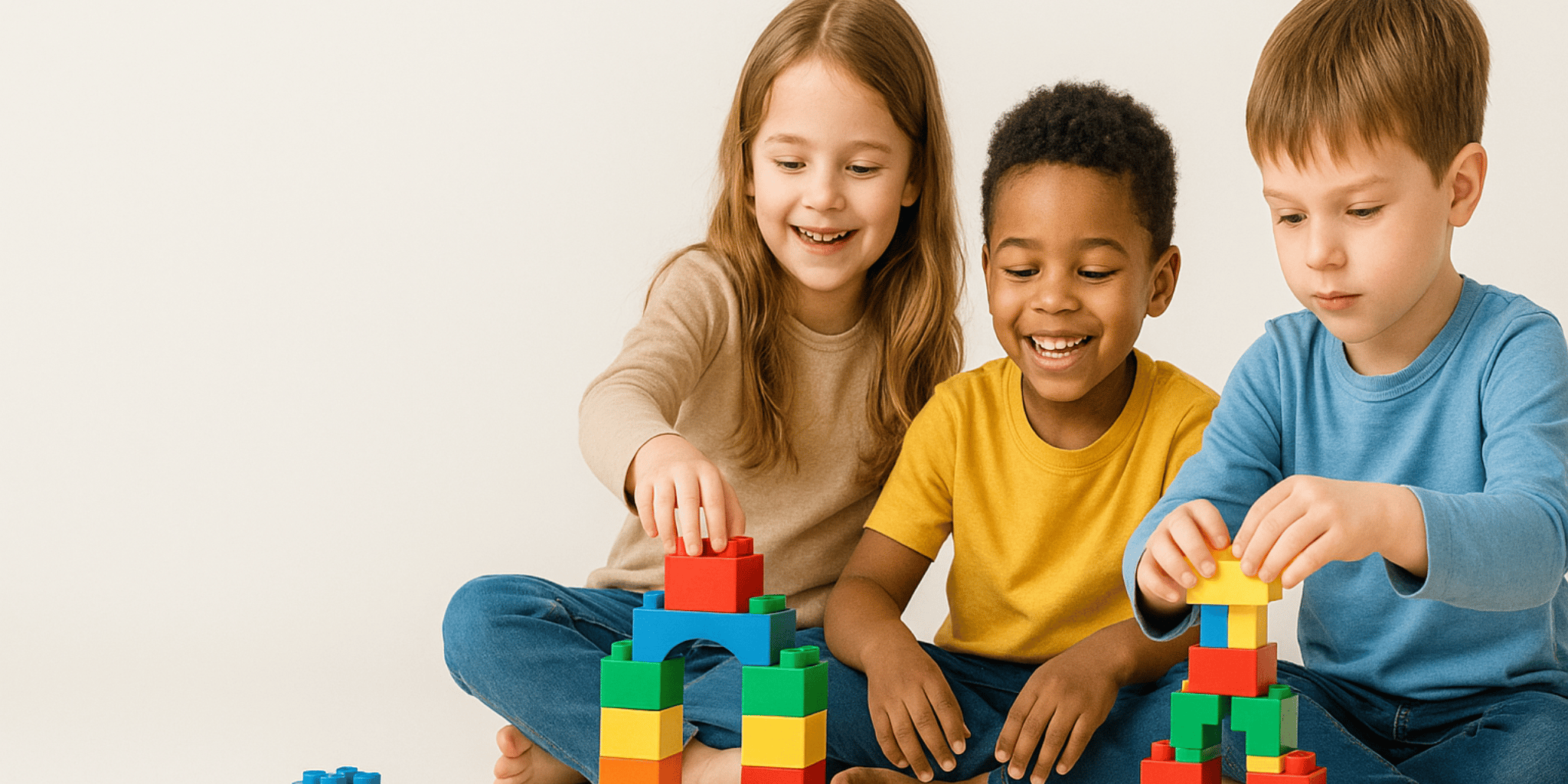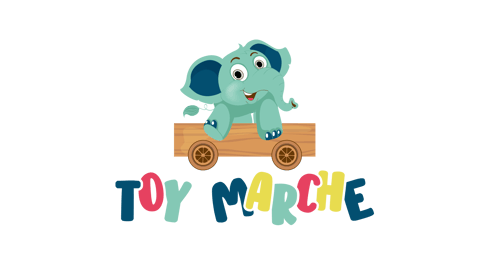- Home
- Blogs
- World Of Toys
- Unlock Creativity with Engaging Building Blocks Toys
- Unlock Creat...
Unlock Creativity with Engaging Building Blocks Toys
- By Toy Marche
- • May 01, 2025

Building Blocks Toys: Nurturing Creativity & Learning
Introduction
Play strengthens the growth of children and is an essential activity. Many different kinds of playtime activities are available to children today; however, building blocks have stood the test of time regarding toys. Building blocks are more than just colorful bricks; they encourage the development of fine motor skills, enhance logical reasoning, and facilitate STEM learning.
With the simplicity of having hands-on, tactile engagement with play as the only distraction available in the modern world, building blocks offer entertainment and enhance imagination and teamwork. Let’s discover how these toys are fundamental for achieving milestones in education and development.
What Are Building Blocks Toys?
Building blocks toys games are in various forms: foam shapes, wooden cubes, tiles made of magnets, and plastic bricks games. Simple in nature, these tools allow children as young as toddlers who can stack shapes to older children who can design entire cities to let loose their imaginations.
Cognitive Benefits of Building Blocks
Developing Problem-Solving Skills
Stacking and interlocking blocks enable children to solve and understand spatial problems and relationships between actions on a grander scale. Each block allows the child to understand what stays standing, what topples down, and what fits.
Enhancing Memory and Focus
Paying attention improves with the ability to recreate specific patterns and complex structures. All these factors enhance short-term memory and serve as practical skills for children to help in their day-to-day activities and at school.
Educational Construction Toys and STEM
Educational construction toys combine science, technology, engineering, and mathematics (STEM) elements in playful and captivating ways. As children construct bridges or buildings, they begin to grasp concepts of balance, shape, and geometry without formal instruction.
Early education associations such as The LEGO Foundation and the National Association for the Education of Young Children (NAEYC) have emphasized integrating STEM education through hands-on experiences.
Social and Emotional Growth
Cooperative Play
Working together helps develop communication and teamwork skills. During the co-creation process, ideas are exchanged, and differences are settled.
Confidence Building
Children gain confidence from achieving goals over time. Constructing a complex structure instills a sense of achievement.
Motor Skill Development
Manipulating small pieces involves precise hand movements and eye coordination and enhances motor skills. These form the foundation of writing, drawing, and even putting on shoes.
Types of Building Blocks Toys
Wooden Building Blocks
These wooden blocks are perfect for toddlers interested in balancing and stacking toys and learning coordination while under naturalistic aesthetics.
Interlocking Plastic Blocks
Older children favor these as they allow for numerous configurations and constructions. LEGO has pioneered this category.
Magnetic Construction Sets
This modern evolution allows for easier and more imaginative construction using magnets.
Safe Play and Age Appropriateness
Always choose building blocks that are appropriate for the age of your child. Soft blocks are better suited for toddlers, while older children can handle intricate and smaller sets. Your buying choices should be influenced by safety standards set by bodies like ASTM International and the CPSC (Consumer Products Safety Commission).
The Role of Building Blocks in Montessori and Waldorf Education
Both Montessori and Waldorf’s philosophies of education encourage unrestricted and creative play. Building blocks are crucial in these educational frameworks where children captivate and direct their learning through touch.
How to Choose the Right Building Blocks
- Age Appropriateness
- Material Safety
- Skill Level
- Educational Value
Select toys that align with your child’s developmental stage and interests.
Building Blocks in the Digital Era
With screens encroaching on every facet of a child’s life, tactile building block toys are again emerging because of their imaginative and sensory appeal. Many educators and therapists now recommend them for cognitive rebalancing and a digital detox.
Where to Find Quality Building Blocks
For a diverse and age-appropriate range of educational construction toys, refer to trusted online sources like:
- ToyMarche - Building Blocks
- Melissa & Doug
- LEGO Education
- Scholastic Parent Resources
These platforms provide quality options that combine safety, creativity, and fun.
FAQ
Q1: What age is best for building blocks toys?
A1: Building blocks come in various age ranges, beginning with larger, more secure blocks at 12 months. To interlocking sets for older kids.
Q2: Do building blocks toys improve intelligence?
A2: They enhance brain development at younger ages by increasing intelligence in logic, spatial awareness, problem-solving, and other areas of early intelligence.
Q3: Are building blocks suitable for both boys and girls?
A3: Yes. Building blocks foster cross-creational design and even engineering learning without gender constraints.
Q4: What should I look for in educational construction toys?
A4: Pieces of the right age, non-toxic materials, STEM, and versatile designs in building toys.
Q5: Can building blocks help children with special needs?
A5: Yes. Many therapists implement blocks in sensory and motor skills therapy, especially in children with autism or other developmental delays.
Final Thoughts
Building blocks toys are not only a means of entertainment. They aid in setting up children to succeed academically, emotionally, and even creatively. In this era of rapid digital change, the world has not needed these imaginative toys more.
Leave a Comment
Blogs
Popular Posts
Welcome to Toy Marche, your ultimate destination for all things toys! We offer a carefully curated selection of safe, high-quality, and age-appropriate toys from trusted brands like Hot Wheels, Mini GT, Hasbro, Hape, Giggles, Funskool, and more. For budding architects, our collection of building blocks features top brands such as Lego, Sluban, Airfix, Engino, KIPA, and Zephyr. Parents seeking educational and learning toys will love our options from PlayShifu, Smartivity, Explore, and Skillofun, including wooden toys from Open Ended, Hilife, and more. Collectors will be thrilled with our range of diecast cars from Mini GT, Hot Wheels, Majorette, and Greenlight Collectibles, and action figures from Marvel, Star Wars, and DC. For little ones who adore dolls, we have delightful offerings from Barbie, Sparkle Girlz, Hasbro, Mirada, and Winmagic. Our STEM toys inspire curiosity and foster critical thinking, while outdoor playsets and ride-on toys encourage active fun. Don’t miss our adorable stuffed animals and soft toys from Wild Republic, Mirada, and Ty Toys, perfect as gifts for any occasion. With a seamless shopping experience and a dedicated customer service team ready to assist you, Toy Marche is here to make toy shopping a joyful and hassle-free experience. Discover our collection today and bring home the perfect toy to spark happiness and imagination!
Tags: Toys For Babies India, Buy Soft Toys Online, Buy Preschool Toys, Buy Toys Online India, Best Online Toy Store, Preschool Toys For Sale, Outdoor Swing Sets For Kids, Buy Outdoor Toys Online, Buy Puzzle Games Online, Learning Books For Kids, Dolls For Girls Online, Buy Toy Car Online, Buy Action Figures Toys, Learning Toys For Kids, Sell Used Toys Online, Buy Kids Toys Online, Online Toy Store India, Toys Online Shopping India, Best Online Toy Store India, Toy Shop Online India, hot wheels cars india, Hot Wheels Cars For Sale
Toy Marche
Registered Addr: Greenwood City, Sector 45
Gurgaon
Haryana 122002
IN
NEWSLETTER
Subscribe to get Email Updates!
Thanks for subscribe.
Your response has been recorded.




0 Comment